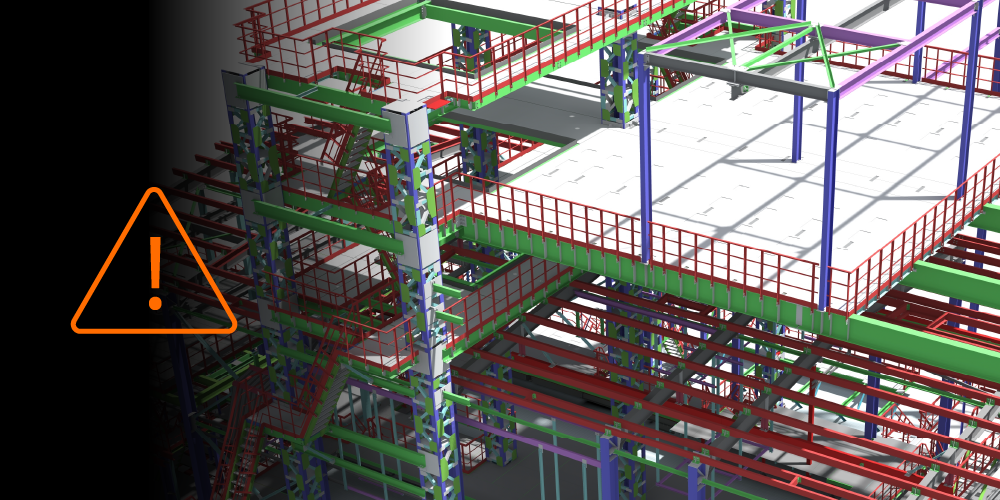Related Articles
— 6 min read
How to Issue a Notice of Delay Under Australian Construction Contracts

Last Updated Oct 21, 2025

Josh Krissansen
47 articles
Josh Krissansen is a freelance writer with two years of experience contributing to Procore's educational library. He specialises in transforming complex construction concepts into clear, actionable insights for professionals in the industry.
Last Updated Oct 21, 2025

Severe weather, supply chain breakdowns, and site access issues can derail progress on even the most tightly managed project.
When they do, the contract leaves little room for doubt: contractors must issue a formal notice of delay to preserve their entitlement to extra time or costs. Without it, legitimate claims risk being rejected outright.
The consequences are real. In State of Queensland v Multiplex Constructions Pty Ltd (1999), the contractor missed the 28-day notice window set out in the contract. The delay was legitimate, but the court dismissed the claim outright because notice wasn’t lodged on time.
Many Australian commercial contracts — including AS 4000 and AS 2124 — treat a notice of delay as a strict condition for any extension of time or cost claim. Miss the deadline, and you may have no recourse, regardless of how valid the reason for delay.
This guide shows you how to avoid that risk, with clear steps for when to issue notice, what to include, and how to ensure it stands up if challenged.
Table of contents
What is a Notice of Delay?
A notice of delay is a written notification required under Australian contracts to formally record events that may impact completion.
Standard contracts such as AS 4000 and AS 2124 make a notice of delay a contractual requirement, not a choice.
Getting this notice in on time is critical. It protects your right to claim extra time or costs down the track. Skip it, and you may lose that entitlement entirely — no matter how legitimate the delay.
A Notice of Delay Is Not an EOT Claim
A notice of delay isn’t an instant green light for more time or money, but it is an early warning to the client that a setback is coming. Think of it as a safeguard: it documents the delay, maintains contractual transparency, and preserves entitlement to lodge an extension of time or cost claim.
Why & When to Issue a Notice of Delay
A notice of delay plays two key roles in Australian construction contracts.
- Protecting your rights. Under many contracts, it’s a condition you must meet before claiming extra time or costs. Missing the deadline could cause you to lose that entitlement altogether.
- Triggering early action. It gives the principal or superintendent a heads-up so they can assess the situation and work with you to minimise the impact.
The safest approach here is to send the notice as soon as you know a delay is happening — or even that it might happen — regardless of whether you have the complete picture. Most contracts set a tight submission window for contractors, often counted in calendar days, so time is of the essence.
Acting early allows resequencing, resource adjustments, or alternate procurement strategies before delays cascade into critical path slippage. It also shows you’re managing the job proactively, which goes a long way toward building trust and keeping relationships strong.
Notice of Delay Contract Requirements under Australian Standard Contracts
Australian construction contracts are crystal clear: strict rules must be followed when issuing a notice of delay. Obligations outlined in detail in the standard form contracts used across the industry.
AS 4000 and AS 4902
These contracts remain widely used on commercial and government projects due to their established acceptance in the industry.
Here’s what sets them apart:
- Notice is expected quickly, but not strictly penalised. You must flag a delay promptly, typically within a reasonable time, but the clock wording isn’t as tight as in AS 2124.
- The claim deadline matters most. You’ve got a defined window to lodge your extension-of-time claim afterward. Miss it, and you could face losing the entitlement entirely.
Timely notice is essential to ensure any subsequent claim remains valid.
A recent Federal Court case underlines this risk. On a major solar and gas project in the Northern Territory, contractors submitted valid EOTs but failed to provide the required detail. The court dismissed the claims outright, demonstrating that vague or incomplete notice is just as risky as no notice at all.
AS 2124
This older contract still regularly appears in civil and infrastructure projects and organisations with long-standing contract preferences.
It is more prescriptive than AS 4000 and AS 4902. Under an AS 2124 contract, contractors must issue a written notice of delay within 28 days of the event. Missing this deadline can result in being time-barred from claiming an extension of time, no matter how legitimate the cause.
A clear example is the CMA Assets Pty Ltd v John Holland case, where the contractor failed to lodge an Extension of Time claim within the required period. Even though the principal knew about the delays, the court enforced the time bar and rejected the claim, reaffirming that contractual deadlines are binding and will be applied strictly.
How to Write a Notice of Delay
A well-prepared notice of delay protects contractual entitlements and sets the foundation for future claims. It should be structured, precise, and grounded in the facts available at the time of submission. The following format is suitable for most Australian standard form contracts.
Project and Contract Reference
Begin by identifying the project and relevant contract documentation. Include the project name, contract number, and date of the notice. This ensures the notice is logged correctly, traceable, and linked to the formal contractual framework.
Description of the Delay Event
Provide a concise summary of the delay event. Identify the cause, the date it commenced, and the circumstances leading to the disruption.
Avoid assumptions or opinions. The notice should reflect verifiable facts that may later be referenced in an extension of time or cost claim.Impact on the Program
Describe how the delay is affecting the construction program. Detail which work areas, milestones, or subcontractor activities have been impacted. Where applicable, refer to critical path items or key dependencies to demonstrate potential flow-on effects to completion.
Estimated Duration of the Delay
Offer a reasonable estimate of the likely duration of the delay. If the full impact is unknown, clearly state this and explain that the delay may affect the contract completion date.
This provides early visibility for the principal and allows for timely risk management.Consequences or Cost Implications (If Relevant)
Note any immediate commercial impacts, such as idle resources, extended equipment hire, or subcontractor disruption. While not a cost claim, this establishes contractual context.
Mitigation Measures Being Taken
Outline the measures being implemented to reduce or contain the delay. This may include resequencing works, sourcing alternate materials, accelerating activities, or reassigning labour.
Reservation of Rights
Conclude by citing the relevant clause of the contract, if known, and confirming that the notice is issued under the agreement. Clearly state that the contractor reserves the right to claim an extension of time and any associated costs once the full impact has been assessed.
A notice of delay protects contractual rights and limits disputes
Under Australian standard contracts, a notice of delay is a mandatory step to preserve entitlement to extensions of time and cost recovery. Clear, timely notices ensure obligations are met, records are maintained, and disputes are less likely to escalate.
Categories:
Written by

Josh Krissansen
47 articles
Josh Krissansen is a freelance writer with two years of experience contributing to Procore's educational library. He specialises in transforming complex construction concepts into clear, actionable insights for professionals in the industry.
View profileExplore more helpful resources

Managing Direct Costs in Construction: How Visibility Drives Profitability
Direct costs define the financial reality of every construction project. They cover the labour, materials, and equipment that drive delivery and determine profitability. But even the best-planned budgets can shift...

BIM Clash Detection: Reducing Rework, Delays, and Risk in Construction
Design clashes can be a significant hidden cost in construction, as each conflict between systems risks expensive rework, project delays, and reduced margins. BIM clash detection empowers teams to identify...

Next-Gen Job-Costing: Ready to Move? 5 Things to Consider Before You Get Started
In this three-part series, Quantity Surveyor turned Financial Solutions Specialist Clint Burgess uncovers the real-world gains for people, processes, and profits when businesses move from legacy to next-generation Enterprise Resource...

From Workarounds to Workflow: Solving Construction’s Legacy Job-Costing System Challenges with Next-Gen Tools
In this three-part series, Quantity Surveyor turned Financial Solutions Specialist Clint Burgess uncovers the real-world gains for people, processes, and profits when businesses move from legacy to next-generation Enterprise Resource...
